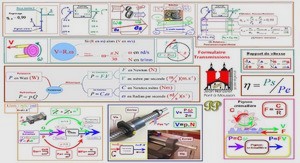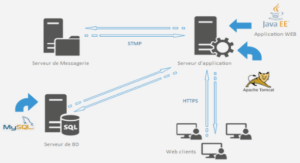Evaluation de la qualité de l’eau d’un cours d’eau en milieu péri-urbain
Paramètres physico-chimiques et éléments nutritifs
The biogeochemical behavior of small rivers that pass through suburban areas are difficult to understand because of the multi-origin inputs that can modify their behavior. In this context, a monitoring strategy has been designed for the Marque River, located in Lille Metropolitan area of northern France, that includes both low-frequency monitoring over a multi-year period (monthly sampling) and high frequency monitoring (measurements every 10 minutes) in spring and summer. Several environmental and chemical parameters are measured including rainfall events, river flow, temperature, dissolved oxygen, turbidity, conductivity, nutritive salts and dissolved organic matter. Our results from the Marque River show that: (i) it is impacted by both urban and agricultural inputs, and as a consequence, the concentrations of phosphate and inorganic nitrogen have degraded the water quality; (ii) the classic photosynthetic/respiration processes are disrupted by the inputs of organic matter and nutritive salts; (iii) during dry periods, the urban sewage inputs (treated or not) are more important during the day, as indicated by higher river flows and maximal concentrations of ammonium; (iv) phosphate concentrations depend on oxygen contents in the river; (v) high nutrient concentrations result in eutrophication of the Marque River with lower pH and oxygen concentrations in summer. During rainfalls, additional inputs of ammonium, biodegradable organic matter as well as sediment resuspension result in anoxic events; and finally (vi) concentrations of nitrate are globally constant over the year, except in winter when higher inputs can be recorded. Having better identified the processes responsible for the observed water quality, a more informed remediation effort can be put forward to move this suburban river to a good status of water quality. Keywords: river, high frequency monitoring, biogeochemistry, nutrients, eutrophication, urban inputs. III.1.a. Introduction The European Water Framework Directive (WFD: 2000/60/EC) aims at improving the status of all categories of water bodies. The main objectives of this policy are to preserve and restore a good status to water bodies in member states for 2015 or 2021 and 2027 in cases where the deterioration of the water quality has been observed. For that purpose, environmental quality standards have been established by the directives 2008/105/EC, and 2013/39/UE for the chemical status of water. Moreover, national governments have to develop and implement environmental quality standards and quality grids for maintaining a healthy ecological status of these water bodies (French decrees of 27/07/15 and 07/08/15). They must also develop strategies of water monitoring to identify the main risk factors of not achieving the good status and then undertake remediation actions. Before any restoration process can be begin, there must first be surveillance monitoring to assess the general status for each type of waterbody, to understand how the aquatic systems function, and to identify any pressures and impacts. Following the WFD, different surveillance monitoring networks were created in 2007 in France. Following the initial surveillance monitoring, an operational monitoring network is used for waterbodies at risk of not achieving good status. An additional monitoring network controls protected areas, and finally, an investigative monitoring network looks at waterbodies for which factors responsible for the degraded status remain unknown. In France, six Water Agencies (FWA) are in charge of the chemical and ecological surveillance of selected sites chosen in agreement with the European Commission. This monitoring is achieved by monthly (WFD monitoring) or bimonthly analysis. In urban areas, the growing population increases the anthropogenic pressures (Álvarez-Cabria et al., 2016; Islam et al., 2014; Su et al., 2013; Srebotnjak et al., 2012; Harrison et al., 2005; Roy et al., 1999; Meybeck et Helmer, 1989) on the rivers flowing through these areas. These pressures are sometimes complex and it is therefore difficult to clearly identify sources of pollution because of the ubiquitous nature of some species like ammonium and phosphates (Causse et al., 2015) and also to propose specific measures of restoration. For these aquatic systems, local authorities try to deploy more targeted monitoring strategies. High frequency monitoring studies have demonstrated their capacity to better describe the behavior of rivers (Halliday et al., 2015; Prygiel et al., 2015; Superville et al., 2015; Bieroza et al., 2014; Boënne et al., 2014; Halliday et al., 2014; Superville et al., 2014; Bowes et al., 2012; Cassidy and Jordan, 2011; Superville et al., 2011; Rozemeijer et al., 2010; Palmer-Felgate et al., 2008; Jordan et al., 2005) compared to conventional grab sampling monitoring. The benefits of high-frequencey monitoring include the ability to distinguish between point-source and nonpoint-source contaminants (Halliday et al. 2015); diurnal nutrient inputs from sewage water (Halliday et al., 2014), or impact of heavy rain events (Boënne et al., 2014). while grab sampling is useful in providing general trends (Halliday et al., 2012; Kirchner et al., 2004) (e.g. seasonal) or in highlighting global effects due to long term changes (Bieroza et al., 2014; Bowes et al., 2012; Kirchner et al., 2004) (climate change, restoration measures etc), high frequency monitoring allows for the understanding of the main biogeochemical processes and the evolution of the water quality at daily scale (Boënne et al., 2014), especially during extreme short events like floods (Bieroza et al., 2014; Bowes et al., 2009; Kirchner et al., 2004).
Setting of the Marque River and the study area
The Marque River is 32 km long and has a corresponding watershed of 135 km2 (Banque Hydro, accessed 2015). It belongs to the Marque-Deûle catchment, which has a surface area of 1120 km2 with a high population density (1,400,000 inhabitants in 2008) corresponding to 1,320 inhabitants per km2 . The Marque floodplain is composed of clayey alluvium that overlies limestone and a series of alternating clay and sandstone beds. The average rainfall is high; about 700 mm per year (Ibert et al., 2015). The Marque River catchment is divided into two main parts: the upper catchment is suburban and characterized by intensive agricultural land use and some wetlands, whereas the lower part incorporates the east side of the large Lille metropolis. Almost 70% of the watershed is occupied by agricultural land and 25% by artificial surfaces (Figure 18). The average flow determined at Bouvines (Lambert II; X = 660016 m; Y = 2620839 m) over the ten last years (N = 111 measurements) is equal to 0.62 m3 s -1 [Coefficient of Variation (CV) of 67%]. The monitoring site of this study, located in Tressin (Lambert II; X = 660973.6 m; Y = 2626005.5 m), has been placed along the outskirts of the suburban area and is located very close (600 m) to the station used by the FWA at Forest-sur-Marque (Lambert II; X = 660286.7 m; Y = 2626452.4 m) for its historical monitoring. III.1.b.ii. Historical data provided by external institutions Historical data from 2007 to 2012 were obtained from the monitoring undertaken by the local FWA Artois-Picardie at Forest-sur-Marque. The grab samples were taken monthly in 2007 and 2008 and bimonthly from 2009 to 2012. All analyses were performed by an accredited laboratory Chapitre III – Evaluation de la qualité de l’eau d’un cours d’eau en milieu péri-urbain 65 and approved by the French Ministry of Ecology for the WFD implementation. The monitored parameters were the water temperature, rainfall (in mm), river flow, Suspended Particulate Matter (SPM), dissolved oxygen, conductivity, Dissolved Organic Carbon (DOC), and the following species: NO3 – , NO2 – , PO4 3- and NH4 + . The averaged rainfall between the data recorded in Forest-sur-Marque and at the meteorological station of Lesquin (InfoClimat, accessed 2016) was used for the analysis of both the historical and the low-frequency data. As for the river flow, data collected by the DREAL (French national agency of environment and land development) represent the average daily flow at Bouvines (located approximately 6 km upstream the study area). III.1.b.iii. Water sampling and analysis Low-frequency monitoring Monthly monitoring based on grab sampling was performed from February 2014 to February 2015. Physicochemical parameters (temperature, dissolved oxygen, conductivity and pH) were recorded in situ using a Multiprobe (WTW). Note, however, that measurements at low temperature (< 5°C) of dissolved oxygen by amperometric sensors (Näykki et al., 2013) and also pH (Barron et al., 2006) can be inaccurate. This could especially increase the discrepancy for the winter season (i.e. January for which the temperature was equal to 5°C). Perfluoroalkoxy bottles, previously washed and rinsed thoroughly with ultrapure water (Milli-Q gradient, Millipore, ρ = 18.2 MΩ cm), were used for water grab sampling. Samples were immediately filtered on site (0.45 µm, cellulose acetate, Sartorius). Anions (NO3 – , NO2 – , PO4 3- ) and ammonium (NH4 + ) were analyzed by ion chromatography (Thermo Fisher ICS-5000 with conductimetric detection). Dissolved Organic Carbon (DOC) concentrations were determined using a TOC-meter (Shimadzu, TOC-VCSH). The amount of SPM in raw samples was determined by the filtration of 1L of water followed by the weighting of the filters after drying at 105°C for 24 hours. High-frequency monitoring High frequency monitoring (every 10 minutes) was performed during two periods: in summer 2014 (from June 23rd to July 24th 2014) and in spring 2015 (from March 20th 2015 to April 20th 2015). The monitoring was carried out using a mobile monitoring station supplied with river water by a centrifuged immerged pump ( 15 m3 h -1 ). A Doppler sensor (Nivus, OCMPro) was installed to record the flow velocity every ten minutes. Velocity was then multiplied by the cross- Chapitre III – Evaluation de la qualité de l’eau d’un cours d’eau en milieu péri-urbain 66 sectional area of the channel to determine the river flow. At the monitoring station, a series of sensors allowed for the measurement of temperature and pH (Yokogawa, modelSC21 AGP24), conductivity (Yokogawa, Cell X00168), oxygen (WTW, TriOxmatic 690), turbidity (Metrawatt, model GTU702) and ammonium (WTW, model NH 500/TC). The water was filtered at 40 µm (WTW PurCon) for nitrate and phosphate analyses. Nitrate concentrations were directly quantified by UV molecular absorption spectroscopy (WTW, model TRESCON N211), whereas phosphate concentrations were measured by spectrophotometry at λ= 950 nm after the formation of a yellow vanadomolybdate complex (Rodier et al., 2009). For these two latter parameters, note further that the measuring systems were not based on sensors.




